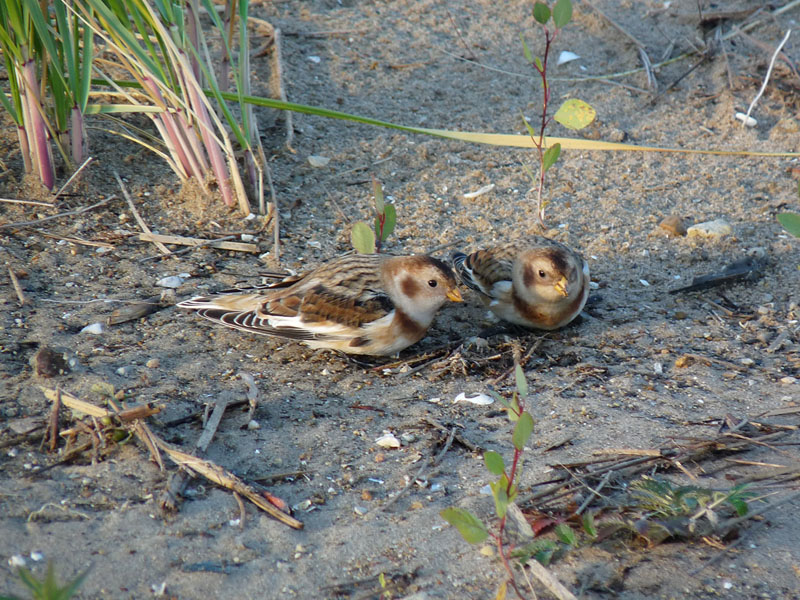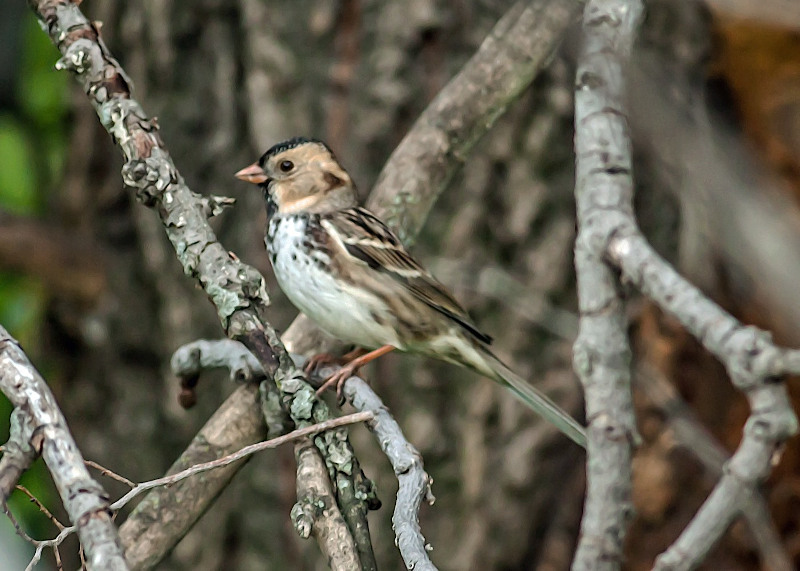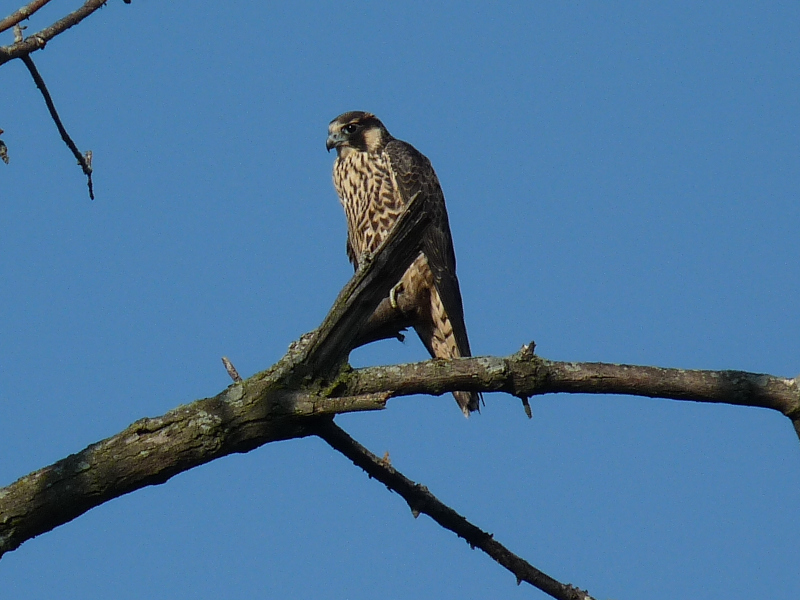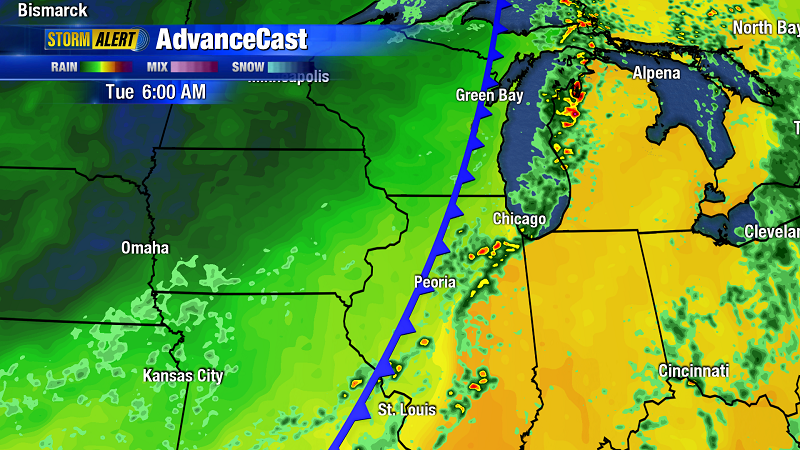November is one of the most exciting months of the year at Montrose. The list of rarities found there in November is long and distinguished. As examples, an Ancient Murrelet, just the fourth record for Illinois, made an appearance in 2019, and in 2020 the fourth state record Cassin’s Sparrow delighted birders. General birding can be good too. Here are a few November birding tips:
- Check the beach and Dunes for Lapland Longspurs and Snow Buntings. The buntings favor the more open areas of the Dunes, and the longspurs are usually flying over. Both will sometimes feed out in the open on the beach or even in the algae that washes up on the beach.
- On days with brisk west winds, Short-eared Owls are a good bet in the Dunes. They usually kick up out of the denser vegetation and fly out over Lake Michigan.
- With a little effort and luck, Northern Saw-whet and Long-eared Owls can be found in the peripheral plantings. Look for whitewash and listen for scolding, excited Black-capped Chickadees.
- The fishing pier is an excellent place to scan Lake Michigan for loons, grebes, and waterfowl, either resting on the surface or in flight. Overcast days with light winds offer the best viewing conditions.
- Northern Shrikes like the Dunes and more open areas of the Point. Look for them perched in the tops of trees or flying through, flashing their white wing and tail spots.
- Black-legged Kittiwakes sometimes turn up, especially on days with northeast winds. They aren’t a sure bet but if you’re at Montrose on a day with easterly winds, pay attention to the gulls flying by. This applies for jaegers too.
See the Montrose Glossary page for descriptions of the locations mentioned above.





